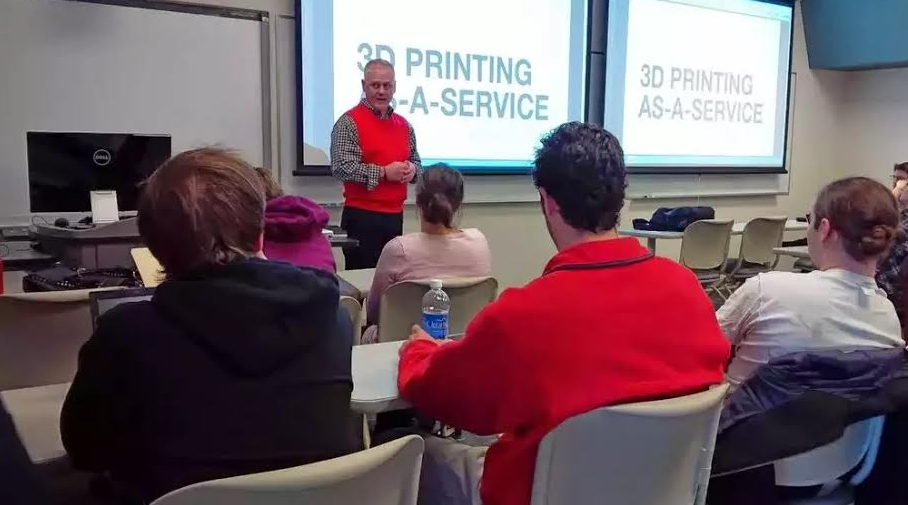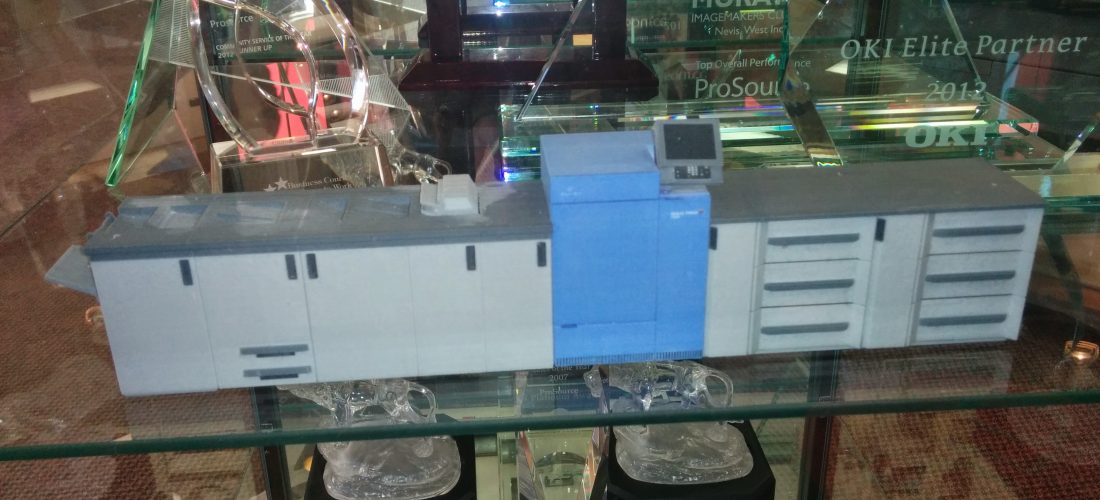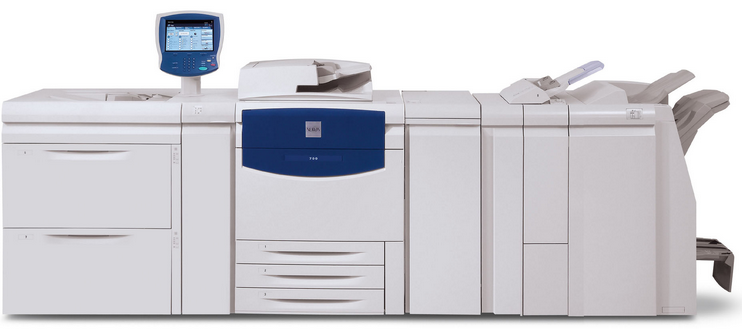 If you know me, or have read my work, you know I come from the 2D printing industry and was selling machines for Xerox back in the 1990’s, when digital (2D) printing was just taking off. For a long time now, I’ve been comparing 2D and 3D printing. Now, others are joining the fray.
If you know me, or have read my work, you know I come from the 2D printing industry and was selling machines for Xerox back in the 1990’s, when digital (2D) printing was just taking off. For a long time now, I’ve been comparing 2D and 3D printing. Now, others are joining the fray.
Last week Eddie Krassenstein wrote an article about the underperformance of Stratasys and 3D Systems. He interviewed Rick Twiggs, who owns a consulting company called Unchained Thought. Near the beginning of the article, Mr. Twiggs is quoted as saying this:
“The decline of sales by Stratasys and 3D Systems is directly tied to early entry assimilation in large companies,” Twiggs explained. “Many companies have purchased millions of dollars in machines to use in house and will not be purchasing any more machines for a while. There is also a trend in the stagnation of 3D Print Bureaus which I believe many businesses are realizing is very similar to, if not identical to the traditional printer industry back in its hayday.”
At first I was elated to read that others are starting to see the pattern. History is repeating itself. But after finishing the article, I feel Mr. Twiggs has really missed the lesson history is trying to teach.
First, big companies didn’t start by outsourcing print and then eventually purchase machines themselves. Selling “big iron” at Xerox was a two-pronged approach. While some of us were selling to commercial printers, there was a much bigger team selling to corporate, and most of the initial installs went there. Why? They were already selling equipment in the enterprise and had relationships with “in-plant” print shops. We were selling to printers who struggled to see why they should go digital. “We don’t need no Xerox” was something I heard frequently in the early days. It became cliche.
Second, the stagnation of equipment sales had nothing to do with the cost of machines. As Twiggs put it:
“Eventually, the consumer market would explode and now nearly everyone has a home printer. This has led to the powerful decline in Print Bureaus which existed out of necessity for a few decades.”
Wrong. Even now, when desktop printers are nearly ubiquitous, less than 10% of all print volume is produced on those devices. The vast majority is produced on high-volume production equipment – and most of that is produced “for pay” by commercial printers (service bureaus).
Here’s what really caused the stagnation. The innovation cycle for “big iron” was pretty short (for those days) and the equipment was expensive.
Most people think the cost of the machine is a big hindering factor for 3D printing. But that’s not true. It’s all a matter of throughput. Would you rather have a machine that costs $500 and produces parts for $5 or one that costs $500,000 and produces parts for a fully burdened cost of $.50? The latter probably, if you have the volume to support it.
It’s All About Amortization
In the early days, customers had two choices. Buy the equipment outright or arrange their own financing. Buying created a capital expense, which for most corporate accountants is a bad thing. Financing was a chicken-and-egg  proposition. You had to have business to receive financing and you had to have the equipment to get the business.
proposition. You had to have business to receive financing and you had to have the equipment to get the business.
So, companies like Xerox started leasing equipment. This was good for customers because in most cases, leases could be recorded as an operating expense, which accountants like. Also, if you leased the equipment for five or six years, the monthly payment became pretty affordable. And finally, because companies like Xerox financed their equipment internally, approval was easy. That mattered a lot in the early 90’s when credit was tight. It also significantly reduced the risk for entrepreneurs.
But leasing came with some unintended consequences. It meant you were stuck with a piece of equipment. Two years later, when the next new thing came out, if you wanted to upgrade, the principal and interest of your old lease was rolled into a new lease.
If you were an independent print shop and I did that to you four times over ten years, your $500,000 machine had a payment equal to $1 million or more. You couldn’t compete with others who weren’t strapped with that debt. If you were a corporate in-plant print shop and you let that happen, sooner or later you had some “splainin to do.”
Because those internal leases didn’t have a personal guarantee attached to them, many independents simply folded up their business and started fresh. They would call me a month or so later and tell me about the new shop they were opening and we’d start the whole cycle again. The motto in commercial print was, “just outrun it.”
Back then, if you were a software maker, a manufacturer, or an insurance company print was still critically important. You couldn’t ship software without a manual, a lawnmower without instructions, or receive payment for your policies without an invoice.
But, at the same time there was significant pressure on corporate organizations to run leaner. Many started questioning the value of their in-plant print shops. Organizations like Xerox had to react. The early answer was facilities management (FM).
They’d bundle equipment, consumables, labor, and even space under one contract. This allowed enterprises to get rid of their in-plants without getting rid of their reliance on a dedicated print shop.
Over the decade of the 1990’s the number of sizable in-plant print shops declined from over 4,000 to under 1,500.
But FM didn’t solve the problem of equipment migration. In fact, it made it worse. Now you were contractually obligated to supplies, labor and space. If you wanted to upgrade, some of that stuff got rolled in too. It started a vicious cycle where companies would try facilities management and then after the contract, bring print back in-house, and then go back to FM again.
Even worse, it created a big battle over supplier competition. Printers were buying gear only to find out they were competing for volume against the manufacturer who sold it to them.
Some savvy companies (both corporate and print-for-pay) started asking why they were financing equipment at all. It was really more like a franchise relationship. Copier companies supplied the gear, but the customer supplied volume.
Big players said, “if you want to do business with us, we need to share revenue.” They wanted a fixed price per page based on the volume they managed. If new equipment was introduced, they wanted to be upgraded automatically.
That was the beginning of rental agreements. At first, those were for big players only. Later it worked its way down into the mid-volume arena as a “cost-per-copy” agreement. They continue to evolve. The new buzzword is “managed print services.”
Digital printing is far from dead. In fact, according to Smithers Pira, it’s forecasted to be a $187 billion market by 2018. And get this. According to Print is Big, by 2018 nearly 50% of all print ($320 billion) will be ordered online and produced for pay, by someone who’s not using a desktop printer.
The Real Problem
So, what’s the real problem for Stratasys, 3D Systems and anyone else who wants a slice of the market? Well, it’s not  the threat of consumer 3D printing.
the threat of consumer 3D printing.
Consider HP’s market entry plan. They’ve gone on record saying they’re not interested in selling desktop 3D printers. They’re focused on building end-to-end solutions for the enterprise. It’s no coincidence that HP’s Worldwide Director of 3D Printing, Scott Schiller, cut his teeth building high-volume inkjet solutions for the book publishing market. They’re chasing volume.
Real Answers
The real solution is three-fold. First 3D Systems and Stratasys have to be able to match the pace of innovation. Production equipment will quickly get faster, better and cheaper (on a per-piece basis). They have to keep up.
For digital (2D) printing, the big tipping point was affordable color. I think the same will be true for 3D. Whether that’s best accomplished through production or finishing is a worthy debate, but how many mass produced products do you buy today that are single color? Not many. Obviously, materials also play a massive role.
 Second, they need to build platforms that can be upgraded several times over their useful life. Why swap out the entire box if you can upgrade software or add new features like finishing options for instance?
Second, they need to build platforms that can be upgraded several times over their useful life. Why swap out the entire box if you can upgrade software or add new features like finishing options for instance?
Finally, they must get more innovative with equipment finance. The first company to understand the franchising relationship and introduce a true rev-share model will have a significant strategic advantage.
There are a lot of smart people at both companies who “get it.” The challenge is in execution.
As my old history professor used to say, “When you’re teaching this class, it pays to have been there and done that.” And thus endeth the lesson.







